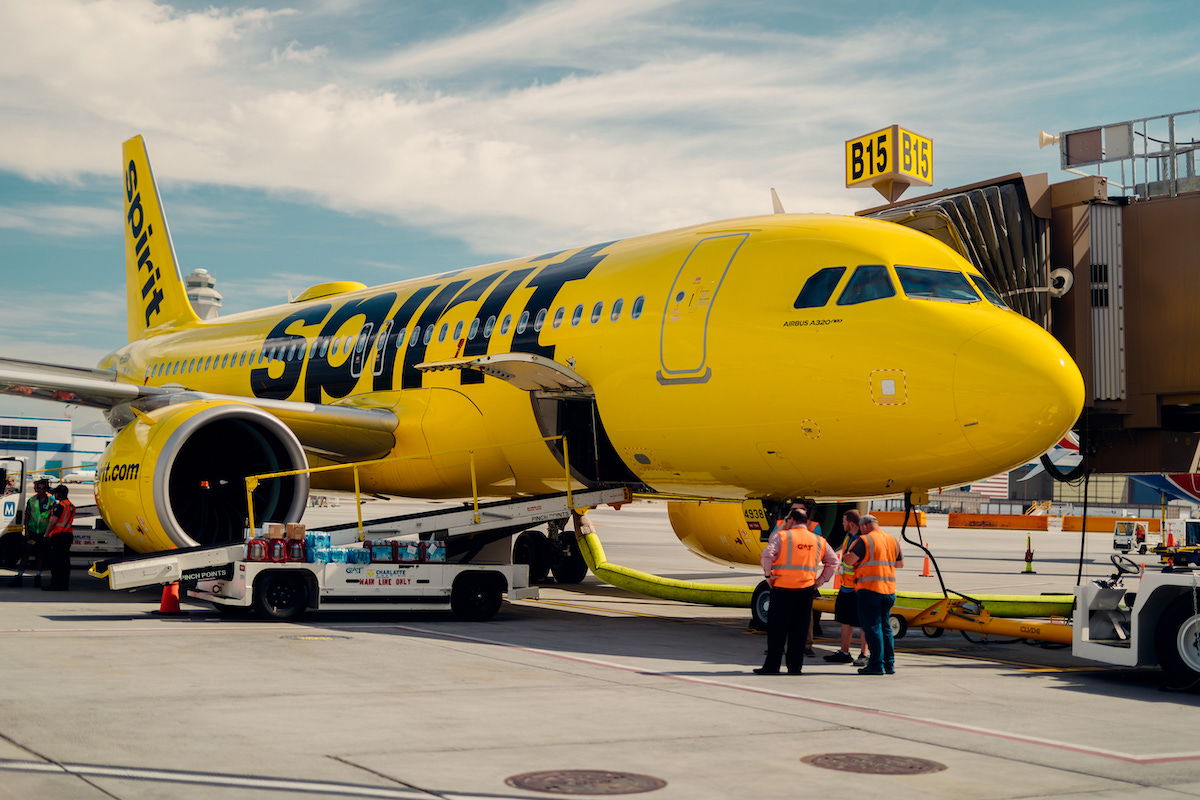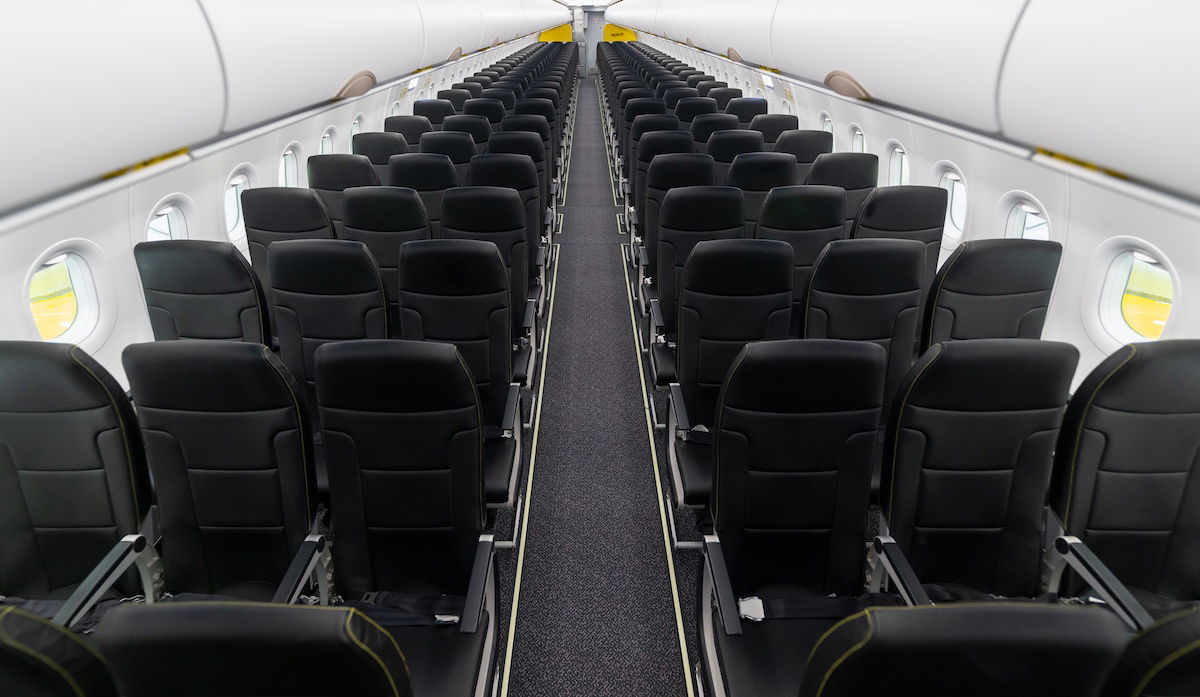It’s a tough time for Spirit Airlines. Several weeks ago, the airline filed for Chapter 11 bankruptcy for the second time in a matter of months, in a move that should’ve surprised no one (well, except the company’s management, seemingly).
While Spirit kind of squandered its first Chapter 11 bankruptcy (by not actually making any structural changes), the airline is making serious changes this time around. Recently, we learned how the airline plans to cut capacity by around 25%, and furlough a large number of pilots and flight attendants. However, that’s only the start of the shrinking, as the airline has now revealed the extent to which it intends to cut its fleet.
In this post:
Spirit Airlines will cut 114 planes from planned fleet
Spirit executives seem to still think the airline has an independent future, and their strategy seems to be to shrink into profitability, by cutting unprofitable flying. Now, of course that seems logical enough, the question just comes down to how many profitable markets exist for an airline like Spirit. I mean, even profitable US airlines aren’t exactly raking in money solely transporting people, but instead, the airlines almost operate as loss leaders for their loyalty programs.
We’re starting to get a sense of just how deep Spirit’s cuts will get. Currently, the airline has a fleet of 214 planes, so here’s the plan that was shared in bankruptcy court:
- Spirit plans to reject 87 aircraft leases, representing around 40% of the carrier’s fleet
- Spirit rejected leases on 27 aircraft from lessor AerCap, whereby AerCap will pay Spirit $150 million as part of a deal that resolves a dispute over 36 planes due for delivery in 2027 and 2028
This plan is expected to save Spirit “hundreds of millions of dollars,” and will “support a much smaller and stronger Spirit Airlines.”

Will Spirit Airlines’ plan to shrink be successful?
It’s important to understand that Spirit has the worst margins in the industry. During its first bankruptcy, the airline only addressed its debt issues, and did nothing to address its horrific operating margins. That’s why so many of us were confused when the airline exited bankruptcy, and just acted as if it was business as usual.
So at least this time around, the company is making major changes. Shrinking this much is obviously a major change, and on top of that, we know the airline is looking for some concessions from labor groups, to get its costs under control.
It always sounds great when airline executives say that their turnaround plan is to cut unprofitable flying. However, it’s a lot easier said than done, when even the best performing routes likely aren’t that profitable.
So we’ll see how this all plays out. If Spirit has any independent future, I imagine it would have to be with a business model like Sun Country, where the airline is very focused on a small number of markets, where it can build up a big presence. That’s really tricky, especially when they’re essentially relying on the mercy of the “big four” carriers, to not come in and squash them.
The airline faces quite the uphill battle, though:
- Other airlines are smelling blood, and are moving into many Spirit markets, in hopes of eliminating this competitor
- Consumers have concerns about booking Spirit, given the potential for the airline to go out of business, plus the extent to which it’s modifying its route network
- Spirit has a bad reputation, and consumers avoid it; I’d argue that the airline largely unfairly has a bad reputation (Spirit employees are mostly delightful), but there’s no denying that it exists
- There’s still the big question as to which markets could actually be profitable for Spirit, especially without significant loyalty program revenue
- The ultra low cost and value carrier business model is reliant on continued growth, in order to keep the cost per air seat mile as low as possible; when you’re shrinking, your costs go up, particularly for labor
So I don’t want to say there’s no chance for Spirit to survive. However, I think the airline is worse positioned for success than a startup airline with a clean slate and no name recognition. And I surely wouldn’t want to start yet just another “value” airline in the United States right now…

Bottom line
As part of its second Chapter 11 bankruptcy proceedings, Spirit Airlines is planning on massively reducing its fleet. The airline is rejecting leases on 87 existing aircraft, and is also rejecting 27 upcoming leases. So in total, the carrier’s fleet will be 114 planes smaller than planned.
Historically, airlines shrinking their way into profitability hasn’t exactly proven to be a winning move. At the same time, what else is the airline supposed to do, exactly?
What do you make of Spirit’s plans to shrink?




My wife and I have flown Spirit 3 times in the last 10 months, Newark to South Carolina, to visit our granddaughters.
On a scale of 1 to 10 for customer service we would rate them a "12".
Planes are on time and spotless.
After upgrading and paying for a checked luggage price still more then 50% cheaper then United.
Good luck SPIRIT, hope more people realize you are the best game in town.
Very well written article. What a nice change to read a well written article - good job
You should buy some stock it’s 38 cents now. Up from 0.20 a month ago. 15X in ten years from now.
America West shrank to profitability during its 1991 to 1994 bankruptcy.
I have never known a company that has ever succeeded in "shrinking to profitabilty.
Said the Flight Attendant from " The financially troubled Pan Am ".
There is nothing keeping Spirit in releasing the planes at a more favorable terms. They are cleaning up their balance sheet which they should have done in the first filing.
I don’t have the time to analyze all the routes they are cutting.
But my questions is: are any of their routes really profitable for them?
If some are, then okay. If not, they need to do something besides cut routes.
I think I read somewhere, and I could be wrong, that outside analysts think maybe a dozen routes could be solidly profitable.
This is a gift to JetBlue. No I am not talking about JetBlue getting those aircraft. I am talking about the reduction in capacity-especially in Fort Laurderdale.
If JetBlue can take back some pricing power this will really help them.
JetBlue needs to move quickly for other (both trunk & ULCC) carriers will fill in the void at FLL.
However, it needs to be deliberate in picking the new routes, not just throwing darts at the map.
Distressed asset sale has been their destiny for some time.
Still is.
My guess is that there will be a lot of airlines chomping at the bits to scoop up those aircraft.
I don't think so. United has said it would take 3 years and $15 million per plane to reconfigure Spirit's planes to United's standards. I can't imagine things would be any different for any other airline.
US airlines have their fleet growth like they want them. This isn't the '90's when everybody was throwing as much capacity as they could in a suicidal quest for market share.
Then there's the "ceo" planes. Nobody's comping at the bit for those.
Plus Spirit’s aircraft have GTF engines rather than LEAP. Spirit has had nothing but trouble with them.
Perhaps the ones that have been fixed, as well as the ones that have already been fixed, will find a home soon, but not in the US.
The ceos, parked at Goodyear, AZ, will be a giant yellow blob, visible from space.
Certainly, all of the industry experts will offer their insights.